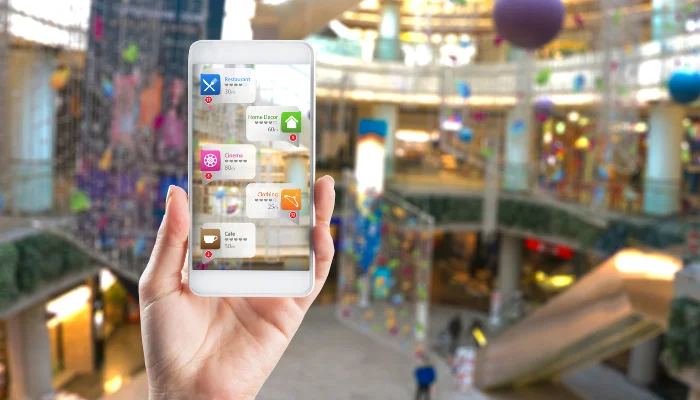
The metaverse, a term that once belonged in the pages of science fiction, is rapidly becoming a reality. This digital universe offers an immersive, interactive, and hyper-connected environment where people can meet, work, and play. As the metaverse evolves, it presents a new frontier for digital marketing. Marketers are now tasked with navigating this virtual landscape, adapting traditional strategies to fit a world where the digital and physical increasingly intertwine. This blog explores how digital marketing strategies are transforming in the age of the metaverse.
The metaverse is an expansive network of 3D virtual worlds focused on social connection. It’s not owned by a single entity but is an open ecosystem that various platforms and technologies support. In the metaverse, users can interact with each other and the environment in real-time, using avatars. This concept extends beyond gaming, encompassing virtual real estate, concerts, conferences, and much more.
1. Immersive Brand Experiences
In the metaverse, marketing shifts from traditional ads to creating immersive brand experiences. Brands can design virtual spaces that allow users to explore, interact with, and even influence brand narratives. For example, a fashion brand can launch a virtual store where users try on and purchase digital clothing for their avatars, offering an engaging experience that blends entertainment with shopping.
2. Influencer Collaborations in Virtual Spaces
Influencers have long been a staple of digital marketing, and their role becomes even more significant in the metaverse. Collaborations might involve virtual meet-and-greets, co-created virtual merchandise, or influencer-led events. These activities leverage the influencer’s community to bring users into the brand’s virtual space, enhancing both visibility and engagement.
3. NFTs and Digital Ownership
Non-fungible tokens (NFTs) play a pivotal role in the metaverse, enabling digital ownership of unique items or experiences. Brands are experimenting with NFTs as part of their marketing strategies, offering exclusive digital content, collectibles, or access to events. NFTs not only serve as a new revenue stream but also help in building a community of brand enthusiasts.
4. Personalized and Contextual Interactions
With the metaverse’s rich data on user interactions and behaviors, marketers can deliver highly personalized and contextual advertising. Ads in the metaverse can adapt based on the user’s preferences, history, and current virtual environment, making them more relevant and less intrusive. This level of personalization enhances the user experience while increasing ad effectiveness.
5. Event Marketing and Virtual Spaces
Virtual events have surged in popularity, a trend that the metaverse takes to the next level. Brands can host product launches, conferences, or entertainment events in bespoke virtual environments. These events are not only more accessible but can also offer unique experiences that wouldn’t be possible in the physical world, such as interactive product demonstrations or performances that defy the laws of physics.
6. Community Building and Engagement
The metaverse emphasizes community and social interaction. Brands can create or sponsor virtual spaces that foster community around shared interests, hobbies, or brand loyalty. These spaces can host discussions, events, and collaborations, turning passive consumers into active community members. Engaging with consumers in these settings helps build stronger, more personal connections.
Also Read: The Impact of Privacy Changes: Navigating Digital Marketing in a Post-Cookie World
1. Navigating Privacy and Security
As with any digital innovation, the metaverse raises questions about privacy and security. Marketers must navigate these concerns carefully, ensuring that user data is protected and that marketing practices are transparent and ethical.
2. Accessibility and Inclusivity
Ensuring that virtual spaces are accessible and inclusive is crucial. This includes considering users with disabilities and those with limited access to high-end technology. Inclusive design and accessibility features will be vital in ensuring that the metaverse is welcoming to all.
3. Maintaining Brand Consistency
Maintaining a consistent brand identity across both physical and virtual spaces can be challenging. Brands must ensure that their virtual presence aligns with their overall brand values and identity, offering a cohesive brand experience.
As the metaverse continues to grow, it will undoubtedly shape the future of digital marketing. We can expect to see more innovative uses of technology as brands strive to create memorable, engaging experiences for their customers. The metaverse offers a canvas for creativity, allowing marketers to experiment with new formats and strategies.
However, success in this new realm will require more than just technological savvy. Understanding the social and cultural dynamics of virtual spaces, respecting user privacy, and prioritizing accessibility and inclusivity will be just as important. Brands that can navigate these complexities while offering genuine value and engaging experiences will be well-positioned to thrive in the metaverse.
The emergence of the metaverse represents a significant shift in the digital landscape, offering new opportunities and challenges for marketers. By embracing immersive experiences, leveraging new forms of digital ownership, and fostering community, brands can connect with consumers in meaningful ways. However, navigating this new world requires a thoughtful approach, balancing innovation with ethical considerations. As we stand on the brink of this new digital era, the potential for creative, impactful marketing is boundless. Adapting to the metaverse isn’t just about keeping up with technology—it’s about reimagining the possibilities of digital engagement.






DigiDir Digital Solutions Private Limited | All Rights Reserved 2018- 2024
Digital Marketing Agency/ Company in Noida, Delhi NCR, India